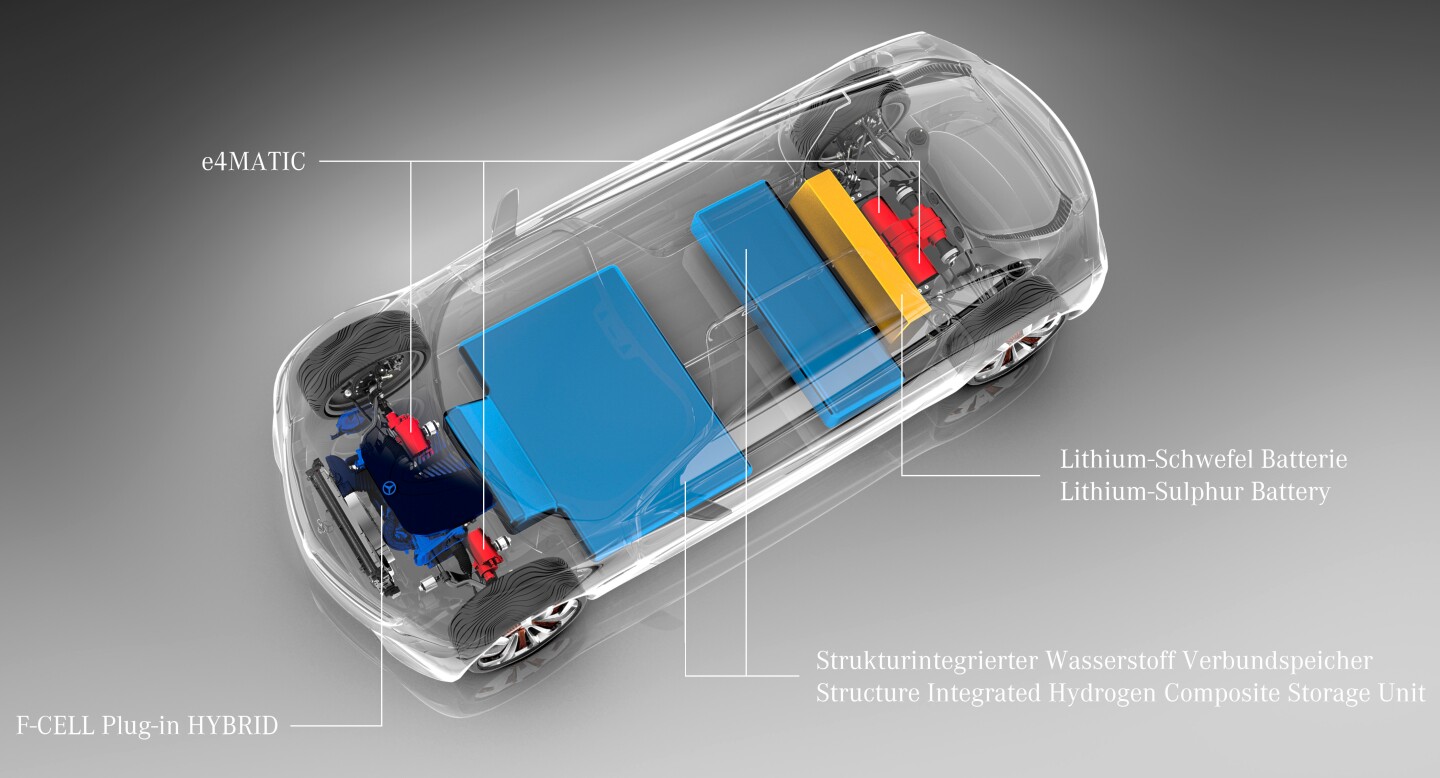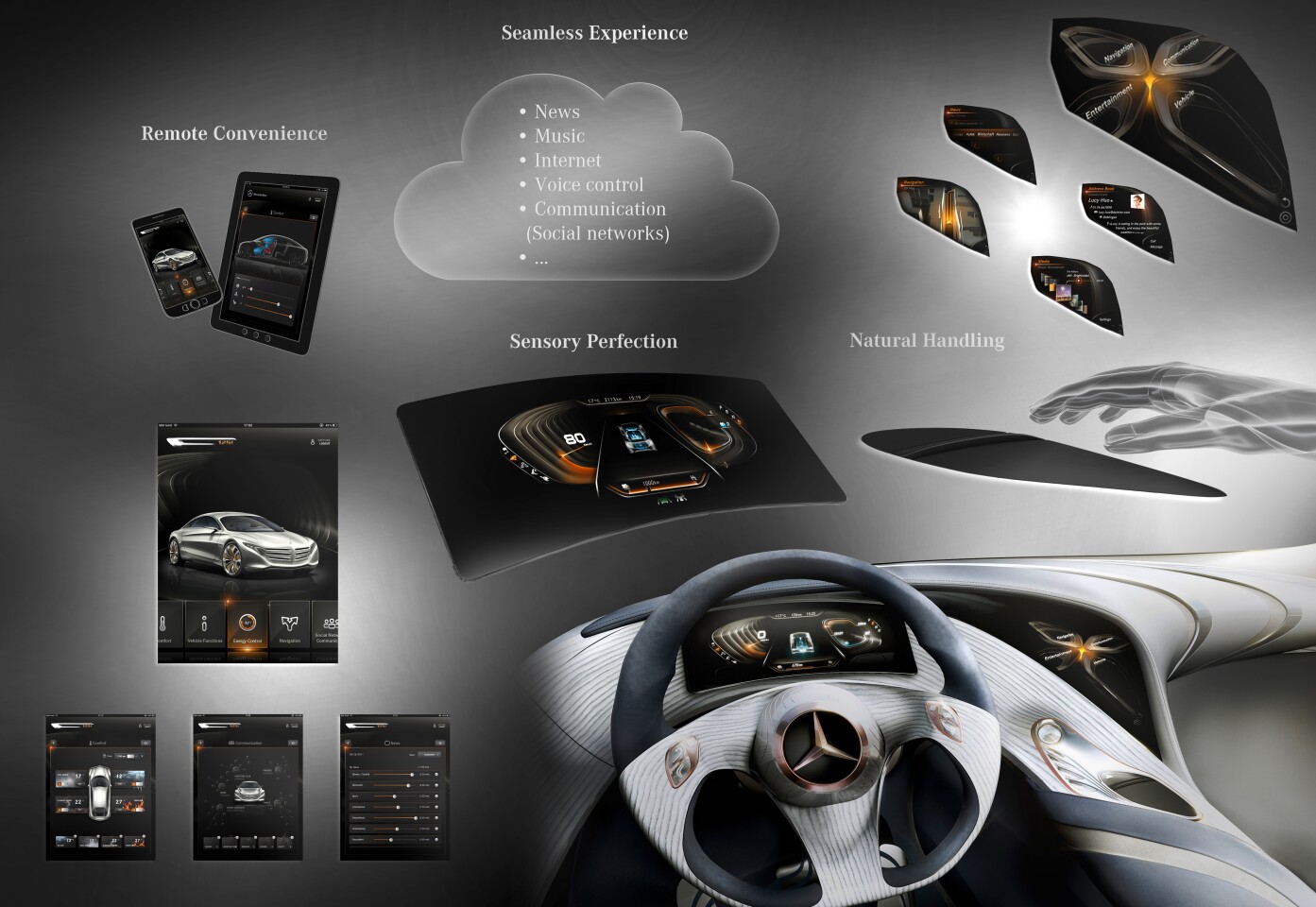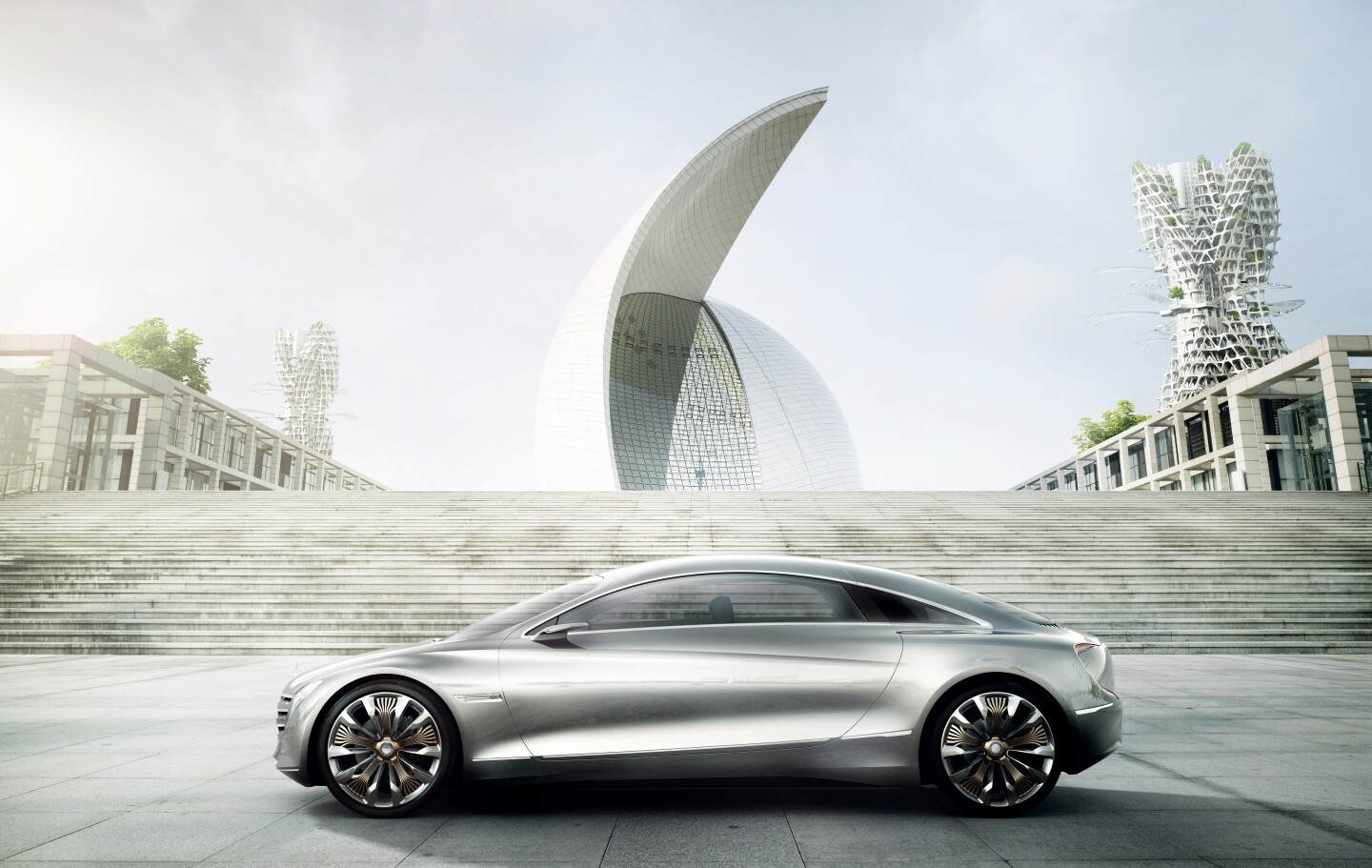To celebrate 125 years of the automobile, Mercedes-Benz has provided a glimpse of where it sees things heading in the future with its F 125! research vehicle. Although it isn't so ambitious as to attempt to predict what cars will look like in another 125 years, the German automaker has decided to look a little further afield than usual. Previous research vehicles have generally looked ahead one vehicle generation, which is roughly seven to eight years, but with a newly developed hydrogen fuel cell system, gesture controls, and range of 1,000 km (621 miles), Mercedes says the F 125! looks forward more than two generations to the year 2025 and beyond.
Bodyshell
The F 125! (Elaine from Seinfeld was obviously part of the naming committee) is an emission-free, four-seater luxury saloon with a bodyshell that retains the drooping line style of recent Mercedes saloons, while looking like it was designed by a science fiction artist from the 1950s. The company says the bodyshell is constructed from a mix of fiber-reinforced plastics, carbon-fiber, aluminum and high-strength steel alloys, which result in a weight of around 250 kg (551 lb) - or around 40 percent that of a comparable current model - while improving safety.

Crash-responsive protective systems within the doors do away with the need for B-pillars, which also improves access to the vehicle's four seats via the wide gull-wing doors. The wide doors and large interior space are enabled by an extremely long wheelbase (3,333 mm/131 in), which is itself enabled by reducing the front and rear overhangs to a minimum. The door opening mechanism, which features electro hydraulic actuators assisted by gas-pressure struts, is invisibly integrated into the rear triangular door panel on each side and the exterior mirrors and door handles have been ditched to lower the vehicle's drag coefficient.
Drag is further reduced by the uninterrupted, single-piece bonnet with integral front wings, while an electrically extending rear luggage module provides improved access to the boot.
Since the F 125!'s fuel cell drive system requires considerably less intake and cooling air than conventional ICE-powered vehicles, the front grille has been set into the front architecture of the car. It is flanked by LED headlamps, which Mercedes says consume 100 watts less than conventional headlamps on low-beam.
Powering the F 125!
Instead of gasoline and lithium ion batteries, the hybrid F 125! is powered by a mix of lithium-sulphur batteries and a new version of Mercedes' F-Cell system that was used to circumnavigate the globe in 125 days earlier this year. With a view to hydrogen-fuelled vehicles that could achieve operating ranges comparable to current diesel models with no reduction in interior space, the F 125! features a hydrogen tank that has been fully integrated into the bodyshell. The tank is integrated into the floor assembly and has a capacity of around 7.5 kg (16.5 lb) of hydrogen. Whereas current high pressure tanks need to be cylindrical to withstand pressures of up to 700 bar, which results in cavities of wasted space, the F 125!'s tank is designed to be filled at a pressure of 30 bar or less allowing it to be better integrated into the bodyshell and also act as a "structural" component.

The hydrogen fuel cell stack centrally located under the bonnet at the front of the F 125! generates electricity to power four electric motors installed near the wheels. Using improved drive components from the SLS AMG E-ELL, this e4MATIC all-wheel drive system generates a continuous output of 170 kW (231 hp) and a peak output of 230 kW (313 hp) to take the F 125! from zero to 100 km/h (62 mph) in 4.9 seconds, on the way to a top speed of 220 km/h (136.7 mph). Despite this, under the New European Driving Cycle (NEDC) the F 125! consumes just 0.79 kg (1.74 lb) of hydrogen per 100 km (62 miles), which is the equivalent of 2.7 liters (0.7 US gal) of diesel.
The hydrogen fuel cell drive system is combined with a lithium-sulhur battery to provide a total operating range of up to 1,000 km (621 miles), of which up to 50 km (31 miles) can be under battery-electric power alone. The battery pack, which is installed behind the rear seats, has a storage capacity og 10 kWh and can be topped up using inductive charging. However, Mercedes made a few assumptions in designing the F 125!. One assumption being that densities of 350 Wh per kg (roughly double current performance) would be possible for this type of battery by the time it is introduced into series production.
To provide optimal traction, active torque vectoring assigns power to each individual wheel as needed, while wheel-specific yaw-damping is designed to deliver improved handling stability at high speeds. The F 125! also features air suspension and continuous damper adjustment and allows the vehicle's suspension height to be adjusted based on speed to, for example, improve aerodynamics while on the freeway.
Auto assist
Using an Advanced Driving Assist system, the F 125! is able to automatically carry out frequently occurring maneuvers, such as autonomous cruising and lane changes, and in future stages, even overtaking. Thanks to radio-based "Car-to-X" networking, the F 125! is also able to exchange information with other vehicles and specially equipped infrastructure, such as traffic lights, warning signs and traffic control centers. This would allow the vehicle to be warned of approaching emergency vehicles or obstacles before they can be seen or heard, or to remind a driver that other vehicles have the right of way at an upcoming intersection.
Speech control
Mercedes also thinks we'll be interacting with our vehicles very differently in 2025 and the "@yourCOMAND" infotainment system in the F 125! reflects this vision. In "Naturally Handling" mode, control is handled mainly via speech, supplemented with touch and hand-gestures - hopefully not some of the more common hand-gestures used by drivers today when communicating with other drivers.

The head unit in the upper section of the center console uses projector beam technology to provide an autostereoscopic 3D display that is controlled via a touchpad with 3D fingertracking technology shows relevant information in clustered form. In addition to the head unit, the driver can also select the instrument cluster and rear-view display using the integrated selection bar. Another 17-inch display installed on the front passenger side is fully controlled by hand gestures to allow passengers to select media from the rear of the vehicle.
A mood-based function allows individual adjustments to the configuration of the system to be made in seconds, while a Social Community Assistant will let drivers decide who is allowed to "disturb" them, or who receives information. Connectivity with the Cloud also provides drivers and passengers with access to all their media and eliminates the need to synchronize data from various communication and entertainment devices.
With the elimination of exterior mirrors, a high resolution wide-image display allows the driver to monitor the traffic situation behind the vehicle.
To the future
Although only a research vehicle, Mercedes says that with the F 125!, "the vision of emission-free driving with large, luxurious automobiles takes on a concrete form," and that many technologies first used on previous research vehicles can now be found in its production cars. The company is particularly enthusiastic about the potential for hydrogen fuel cells to power electric driven large sedans. Recognizing that alternative drive systems will also need alternative infrastructure, Mercedes says it is working with various partners to develop such infrastructure. To that end, Mercedes' parent company Daimler and the Linde Group will construct 20 more hydrogen filling stations in Germany to ensure a supply of regeneration-based hydrogen for the growing number of fuel cell vehicles.

Mercedes-Benz showcased the F 125! at the 2011 Frankfurt Motor Show and while the car itself isn't likely to ever enter production - even in 2025 - expect parts of the vehicle to start appearing on new models over the next decade.





































